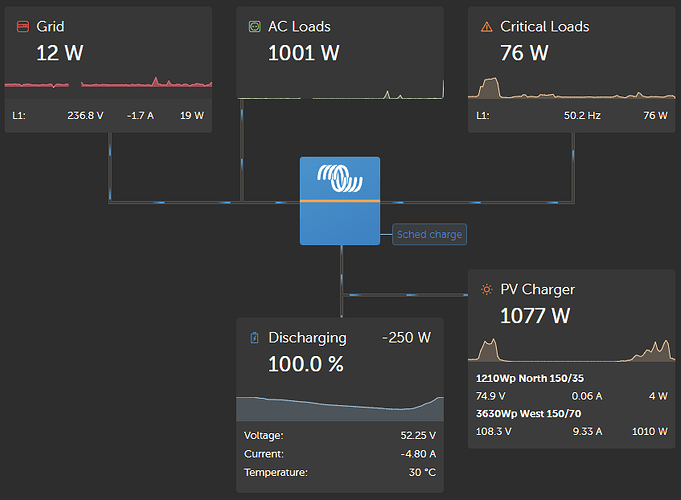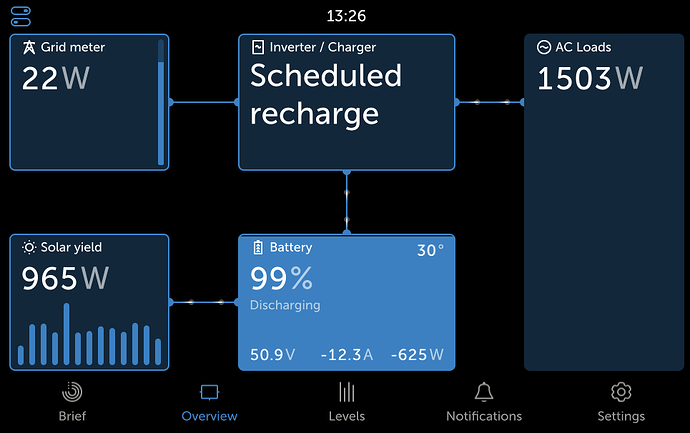On the AC sub DB for my system there is a three position switch.
Top position is labelled “Solar” and this is the position that would usually be selected.
Middle position turns off all power to the property - no grid, no solar. The inverter and battery stay on. (OK, OK… the state of the inverter and battery does not change)
Bottom position is labelled “Grid”.
OK… so yesterday morning we had load shedding schedule from 4:00 to 6:30. I woke up about 5:45 as I had to get dressed and shaved earlier than usual as I would be commuting to Centurion that morning. I decided to have a cuppa. I walked into the kitchen, hit the light switch and … nothing. What?
I took a peek at the inverter. All the lights one would expect to see on were on and in their usual state. Except for the wifi indicator which was flashing - because it couldn’t connect to the wifi in the house.
So it must be earth leakage. What a nuisance at this time of the morning. Only it wasn’t. Every switch on the DB was where it should be.
So now I go and check the sub DBs for the solar system and I find that this three way switch has been left in the “grid” position. Hmmmm… throw that up to “solar” and everything in the house starts switching on. How that switch got to be in that position is a mystery to me, but that’s not really why I’m posting this. Suffice to say that I didn’t change this switch from “solar” to “grid” sometime the previous evening.
Here’s yesterday’s graph from the Goodwe portal
You can see everything going quiet at 4 am. Until then, the system had been behaving as expected. Loads (yellow line) are serviced by the battery, and the SOC (green line) is slowly dropping. At 4:00 the loads drop to almost nothing (actually about 50W, which I assume is self consumption by the inverter). Then just before 6:00 the loads come up again. That’s when I put that three way switch back into the top (“solar”) position.
So now my question: What is the “grid” position on that three way switch for? As I’ve said, the property was running off of battery until the load shedding started. If look at the graph for the day before (when I had no need to touch that switch) the system is working usually: house running off battery until solar starts coming on line, then solar takes over the loads and starts charging the battery. Once the sun goes down, the battery takes over.
So everything ran just as usual until there was a load shed. Then despite the inverter being on and the battery having better than 50% SOC, no power is supplied to the property.
I had thought that “grid” position switched the property to grid and bypassed the inverter, but clearly it does something else. But I’m not sure what.



